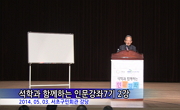신어 교육은 의사소통에 도움이 되며, 신어 교육을 통해 최근에 등장한 공시적 단어 형성법을 이해하고 수시로 생성되는 신어의 의미를 유추할 수 있다. 한국의 경제, 정치, 사회 등 한국 문...
http://chineseinput.net/에서 pinyin(병음)방식으로 중국어를 변환할 수 있습니다.
변환된 중국어를 복사하여 사용하시면 됩니다.
- 中文 을 입력하시려면 zhongwen을 입력하시고 space를누르시면됩니다.
- 北京 을 입력하시려면 beijing을 입력하시고 space를 누르시면 됩니다.
https://www.riss.kr/link?id=T17080030
- 저자
-
발행사항
서울 : 중앙대학교 대학원, 2024
-
학위논문사항
학위논문(석사) -- 중앙대학교 대학원 , 국어국문학과 한국어교육학 , 2024. 8
-
발행연도
2024
-
작성언어
한국어
-
주제어
중국 한국어 학습자 ; 신문 ; 코로나 ; 신조어 ; 어휘교육 ; 지도안 용어 ; Chinese Korean learners ; newspapers ; Corona ; new words ; vocabulary education ; guiding terms
-
발행국(도시)
서울
-
기타서명
(A) study on the Korean vocabulary education method using newspapersfor advanced Chinese learners : based on new words related to COVID-19
-
형태사항
iv, 80 p. : 삽화, 도표 ; 26 cm
-
일반주기명
중앙대학교 논문은 저작권에 의해 보호받습니다
지도교수: 박환영
참고문헌수록 -
UCI식별코드
I804:11052-000000242275
- DOI식별코드
- 소장기관
-
0
상세조회 -
0
다운로드
부가정보
국문 초록 (Abstract)
신어 교육은 의사소통에 도움이 되며, 신어 교육을 통해 최근에 등장한 공시적 단어 형성법을 이해하고 수시로 생성되는 신어의 의미를 유추할 수 있다. 한국의 경제, 정치, 사회 등 한국 문화의 다양한 측면을 배우고 신조어 교육을 통해 새로운 어휘를 개발하며 어휘와 문화를 함께 익히는 것이 주요 내용이다. 신조어의 교육 효과를 톡톡히 보고 있다. 학습자들이 한국 문화를 이해하는 것에 도움을 줄 뿐만 아니라 한국어 학습에 대한 흥미를 높일 수 있을 것이다. 본 연구는 중국 고급 학습자의 어휘력 향상 및 원활한 의사소통을 위하여 한국어 어휘, 특히 신조어에 대한 교육방안을 제시한다. 중국 한국어 학습자들은 한국인과 원활한 의사소통과 한국 문화 및 미디어 문화를 이해하기 위해 신조어 공부가 필요하다. 그러나 신조어에 대한 별도의 교육은 이루어지지 않고 있어 이러한 부분을 보완하여 학습자들이 이전보다 원활하게 소통할 수 있도록 본 논문에서는 신문을 활용한 어휘 교육방안과 신조어를 중심으로 연구한다. 그래서 본 연구에서는 2021년부터 2023년까지 한국의 동아일보에 게재된 기사를 수집하고, 여기서 사용된 코로나 관련 신조어를 50개 조사하여 <신어 2021>과 <신어 2022>의 검증 대조를 통해 인증된 신조어로 확정한다. 본 논문은 중국 학습자 연구 대상이기 때문에 10개의 코로나 관련 한국어 신조어 선정과 함께 이와 의미가 통일하거나 비슷한 중국어 신조어 10개를 선정하여 비교 보조 학습을 진행하였다. 이를 통해 한국과 중국의 코로나 신조어 각 10개를 지도안 용어로 제시했다. 코로나 신조어에 대한 학습이 필요한 것은 이 용어들이 모두 신문 기사에 등장하는 것으로, 한국에 대한 정보를 이해하고 신문 기사를 확인하기 위해서 해당 어휘에 대한 학습이 필요하다고 보기 때문이다. 학습자들은 이렇게 신조어를 통해 한국인과의 소통 능력을 향상하게 되고, 현대 한국어의 다양한 표현을 익혀 보다 유창하게 의사소통할 수 있게 된다. 또한, 신조어 교육은 학습자들의 어휘력을 확장하게 되고, 한국 사회의 다양한 변화를 이해하는 데 도움이 된다는 점에서도 그 필요성이 강조되었다. 결론적으로, 신조어 교육은 한국어 학습자들에게 중요한 학습 경험을 제공하며, 그들의 언어적 및 문화적 역량을 향상하는 데 기여된다. 신조어 교육의 가치는 단순히 어휘 확장을 넘어, 현대 한국 사회와 문화를 깊이 이해하고 원활하게 소통할 수 있는 능력을 길러주는 데 있다. 따라서, 다양한 교육방식을 도입하고, 문화 교육과 결합하며, 풍부한 교육 자료를 제공하고, 학습자의 참여를 유도하는 방향으로 나아가야 한다. 이러한 종합적인 접근을 통해 신조어 교육은 한국어 학습자들에게 더욱 유익한 학습 경험을 제공하고, 그들의 언어적 및 문화적 역량을 향상하는 데 중요한 역할을 할 것이다.
다국어 초록 (Multilingual Abstract)
Neologism education aids communication and allows for an understanding of recent morphological methods of creating new words, as well as the deduction of the meanings of continuously emerging neologisms. In Korea, learning about various aspects of Kor...
Neologism education aids communication and allows for an understanding of recent morphological methods of creating new words, as well as the deduction of the meanings of continuously emerging neologisms. In Korea, learning about various aspects of Korean culture, such as economics, politics, and society through neologism education is central to developing new vocabulary and simultaneously acquiring linguistic and cultural knowledge. The educational effects of neologisms are significant, as they not only help learners understand Korean culture but also increase their interest in learning the Korean language. This study aims to propose educational methods for teaching Korean vocabulary, especially neologisms, to enhance the vocabulary skills and facilitate smooth communication of advanced Chinese learners. Chinese learners of Korean need to study neologisms for smooth communication with Koreans and to understand Korean and media cultures. However, there is no separate education for neologisms, which this paper seeks to address by focusing on vocabulary education using newspapers and specifically researching neologisms. Therefore, this study involves collecting articles from Dong-a Ilbo, a Korean newspaper, from 2021 to 2023, and examining 50 COVID-related neologisms to authenticate and confirm them through a comparison with <Neologism 2021> and <Neologism 2022>. As this paper targets Chinese learners, ten COVID-related Korean neologisms were selected along with ten similar Chinese neologisms for comparative auxiliary learning. This approach has been presented as a lesson plan. Learning about COVID neologisms is deemed necessary because these terms appear in newspaper articles, and understanding them is crucial for accessing information about Korea and verifying news articles. Through learning these neologisms, learners can enhance their communication abilities with Koreans and become fluent in the diverse expressions of modern Korean. Moreover, neologism education extends learners' vocabulary and aids in understanding the various changes in Korean society, highlighting its necessity. In conclusion, neologism education provides an important learning experience for Korean language learners, enhancing their linguistic and cultural competencies. The value of neologism education goes beyond vocabulary expansion to developing a deep understanding of contemporary Korean society and culture and fostering the ability to communicate effectively. Therefore, it is necessary to adopt various educational methods, integrate cultural education, provide rich educational materials, and encourage learner participation. Through such a comprehensive approach, neologism education will play a crucial role in enriching the learning experiences of Korean language learners and enhancing their linguistic and cultural competencies.
목차 (Table of Contents)
- Ⅰ. 서론 1
- 1.1 연구의 필요성 및 목적 1
- 1.2 선행연구 3
- 1.2.1 신문을 활용한 한국어 교육 연구 3
- 1.2.2 한국어 어휘 교육에 대한 연구 6
- Ⅰ. 서론 1
- 1.1 연구의 필요성 및 목적 1
- 1.2 선행연구 3
- 1.2.1 신문을 활용한 한국어 교육 연구 3
- 1.2.2 한국어 어휘 교육에 대한 연구 6
- 1.2.3 한국어 신조어 교육에 대한 연구 8
- 1.3 연구방법 10
- Ⅱ. 이론적 배경 12
- 2.1 한국어 어휘 교육 12
- 2.1.1 어휘 교육의 목표 12
- 2.1.2 어휘 교육 연구 현황 13
- 2.2 신조어 17
- 2.2.1 신조어의 개념 및 특성 17
- 2.2.2 신조어의 유형 19
- 2.3 신문을 활용한 한국어 교육 21
- 2.3.1 신문을 활용한 한국어 교육의 특징 21
- 2.3.2 신문을 활용한 한국어 어휘 교육의 특징 23
- Ⅲ. 신문을 활용한 한국어 어휘 교육을 위한 요구 분석 26
- 3.1 코로나 신조어 추출 26
- 3.2 학습자 요구 분석 방법 35
- 3.2.1 조사대상 35
- 3.2.2 조사내용 35
- 3.2.3 자료수집 및 분석 방법 36
- 3.3 결과 분석 37
- 3.3.1 조사대상자의 일반적 특성 37
- 3.3.2 신조어 교육에 대한 인식 38
- 3.3.3 신조어 교육에 대한 요구도 조사 41
- 3.4 소결론 43
- Ⅳ. 신문을 활용한 한국어 어휘 교육 방안 45
- 4.1 신문에 등장하는 신조어 교육의 가치와 교육 방향 45
- 4.2 교육방안 및 지도안 49
- Ⅴ. 결론 64
- 참고문헌 66
- 부 록 70
- 국문초록 77
- ABSTRACT 79












